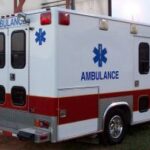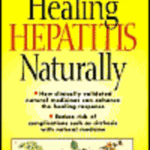Medical Personal Protective Equipment for BSI
Body substance isolation (BSI) is emphasized, along with scene safety, during the first few days of emergency medical technician (EMT) training because of the dangerous exposure to the many communicable diseases that exist in the environments in which health care providers must work, especially EMTs and paramedics who work in the field. Although we have received inoculations against diseases such as hepatitis B, there are communicable diseases for which no vaccination exists and “new” communicable diseases are appearing as world travel increases. Body substance isolation, also known as “standard precautions” and “infection control,” refers to procedures and equipment that help to protect a health care provider from blood and body fluids.
Personal protective equipment includes: vinyl or other synthetic gloves, various types of masks, full face shields (eye and face protection), gowns, goggles, and the practices of hand-washing and hand-sanitizing. Gloves are worn at all times–or at least they should be. This is so important that EMT and paramedic students taking their practical exam for licensure will automatically fail if they don’t use this basic part of medical personal protective equipment. While such a measure sounds a bit too harsh, it’s necessary to drive home the need to practice BSI at all times, not only for the health and wellness of the medic, but for the patient as well. I remember being shocked when I was in training and heard one of my professors, a paramedic specialist who entered emergency medical services (EMS) many years ago, spoke of how medics didn’t use gloves back then and didn’t have personal protective equipment even for cardiopulmonary resuscitation (CPR). I couldn’t imagine working under those conditions.
While a surgical mask should be worn in cases of spatter of blood or fluid, an N-95 or high efficiency particulate air (HEPA) respirator is used when there’s suspicion of tuberculosis, a treacherous disease. Gowns should be worn if assisting with childbirth, and eye and face protection should be used when performing interventions such as suctioning and orotracheal intubation.
EMS Personal Protective Equipment That Doesn’t Protect
The equipment that is not worn cannot protect against communicable diseases. Many health care providers, unfortunately, just don’t take BSI serious enough and often fail to use the medical personal protective equipment that they should. I found this out when I did my clinicals in the emergency room. As a new student, I went among experienced nurses, paramedics, medical students completing their residency, and other health care providers who didn’t bother to use even the most basic of EMS personal protective equipment–gloves. The doctors didn’t fuss with using a mask when they performed procedures such as orotracheal intubation and the list could go on. I was the prim and proper odd ball among them. I admit that it can be very difficult to work in gloves; however, it would be more difficult to face an early end to one’s career as a result of a careless attitude when it come to medical personal protective equipment.
Source:
EMT state licensed, NREMT certified, EMT experience






